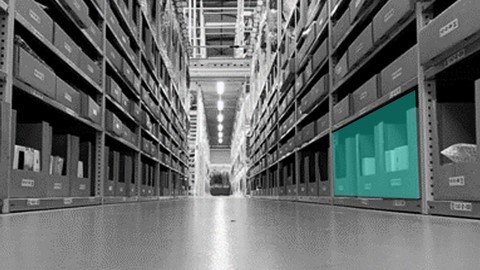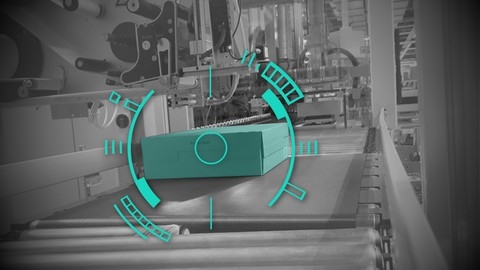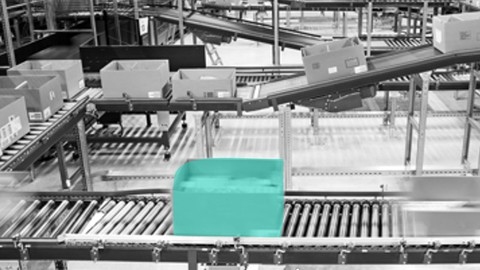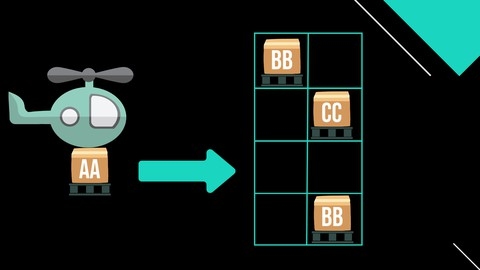SAP Extended Warehouse Management (EWM) is a powerful SAP module that can significantly optimize warehouse operations, streamline processes, and boost efficiency.
Learning EWM can open doors to rewarding career opportunities in supply chain management and logistics.
You’ll gain valuable skills for managing warehouses, integrating with other SAP modules, and optimizing warehouse workflows.
However, finding the right SAP EWM course on Udemy can be a challenge.
With so many options, you need a comprehensive course that’s clear, engaging, and taught by experienced professionals.
You’re looking for practical, hands-on training that prepares you for real-world scenarios.
We’ve carefully reviewed countless SAP EWM courses on Udemy and have identified SAP Extended Warehouse Management - Fundamentals of SAP EWM as the best overall course.
This course stands out because it’s ideal for beginners, offering a comprehensive introduction to EWM fundamentals, covering essential topics like warehouse topology, handling units, warehouse tasks, and advanced concepts like wave management.
The detailed explanations, clear examples, and practical exercises will equip you with the essential knowledge to confidently navigate the intricacies of SAP EWM.
This is just the beginning of our recommendations!
Keep reading for a comprehensive list of the best SAP EWM courses on Udemy, tailored to different learning styles and goals.
We’ll explore courses for beginners and experienced professionals, as well as those focused on specific EWM functionalities and S/4HANA integration.
SAP Extended Warehouse Management - Fundamentals of SAP EWM
The course takes you on a journey through the fundamentals of SAP Extended Warehouse Management (EWM).
You’ll dive into the warehouse topology, learning how to set up and manage different warehouse areas and structures.
Understanding handling units is crucial, and the course guides you through their configuration and usage in various warehouse processes.
Warehouse tasks and orders are at the core of EWM operations.
You’ll learn how to create, process, and monitor them efficiently.
The product master data is equally important, and the course explains how to maintain and integrate it with EWM.
The course covers advanced concepts like waves, which optimize order processing, and storage bin sorting strategies for efficient putaway and picking.
You’ll also explore transportation units, vehicles, and the necessary transaction codes for day-to-day operations.
The basic EWM process is demystified, walking you through inbound deliveries, the ROD/AFS principle for receiving, putaway strategies, outbound delivery orders, and the intricate pick and pack processes.
Goods issue, a critical step, is also covered in depth.
To ensure optimal performance, the course includes an SAP EWM Performance Guide, providing best practices and tips for supercharging your EWM system’s efficiency.
SAP EWM - SAP Extended Warehouse Management
The course covers the fundamentals of SAP Extended Warehouse Management (EWM) and dives deep into its various components and functionalities.
You’ll start with an introduction to EWM and learn how to customize the warehouse settings in both the EWM system and the backend ERP system.
The course then guides you through the intricate warehouse structure setup process, spanning multiple parts.
One of the key areas covered is the EWM Core Interface (CIF), which plays a crucial role in integrating EWM with other SAP modules.
You’ll learn how to configure and utilize this interface effectively.
The course also delves into essential EWM features like packaging specifications, inbound processes, warehouse process types, handling unit management, inbound search strategies, and expected goods receipt (EGR).
These topics are essential for understanding and optimizing warehouse operations.
Quality inspection and process-oriented storage control (POSC) are also covered in detail, ensuring you understand how to maintain product quality and efficiently manage storage within the warehouse.
As you progress, you’ll explore outbound strategies, stock removal rules, wave management, warehouse order creation rules, and cross-docking.
These concepts are vital for streamlining outbound processes and maximizing operational efficiency.
The course doesn’t stop there – it also covers advanced topics like replenishment, production integration, post-processing frameworks, resource management, radio frequency (RF) framework, posting changes, stock transfers, physical inventory, slotting, and value-added services (VAS).
Additionally, you’ll learn about yard management, shipping, receiving, labor management, layout-oriented storage control (LOSC), and the material flow system (MFS).
These modules are essential for managing the movement of goods within and around the warehouse.
The course also covers the data replication framework (DRF) and business partner master integration, ensuring seamless data synchronization across systems.
For those interested in SAP S/4HANA, there’s a dedicated section on the embedded EWM functionality, including system connection setup, warehouse integration, master data integration, and advanced production integration.
SAP Extended Warehouse Management - Customizing SAP EWM
You’ll start by learning about the structural elements and master data in SAP Extended Warehouse Management, including warehouse topology, storage types, bins, activity areas, and more.
From there, you’ll dive into warehouse process types like inbound, outbound, and physical inventory processes.
The course goes in-depth on key inbound concepts like the ROD/AFS principle, putaway strategies, and capacity checks.
For outbound, you’ll learn about decentralized processes, stock removal strategies, and warehouse order creation rules.
The physical inventory section covers different inventory types, the difference analyzer, and how to create and post inventory documents.
You’ll also learn about the powerful Post Processing Framework for delivery processing.
This course doesn’t stop at just the basics - it also covers advanced topics like posting changes and stock transfers, different storage control methods, ad-hoc movements and replenishment techniques, and performance optimization for SAP EWM.
Throughout the course, you’ll get hands-on with configuring these processes in the SAP system.
With detailed examples and step-by-step guidance, you’ll gain practical experience customizing everything from warehouse process types to storage bin determination rules.
SAP EWM - SAP Extended Warehouse management
The course starts with an introduction to EWM and its functionalities, deployment options, organizational structures, and master data elements.
You’ll dive deep into EWM organizational setups, including storage types, sections, bins, and activity areas.
The integration between ERP and EWM is thoroughly explained, covering document mapping and warehouse process types.
Crucial concepts like availability groups, handling units, packaging specifications, and putaway strategies are explored in detail.
The course walks you through inbound and outbound processes, including POSC (Putaway, Outbound Delivery, and Staging Consolidation), value-added services, stock removal strategies, and warehouse order creation rules.
Advanced topics like opportunistic cross-docking, queue determination, resource management, cartonization planning, and bulk storage putaway are also covered.
You’ll learn about essential EWM features such as replenishment strategies, physical inventory, wave management, pick pack pass picking, kit to order, and PPF (Production Planning for Repetitive Manufacturing) actions.
The course also covers the SAP S/4HANA Embedded Extended Warehouse Management, including sessions on organizational structures, master data, integration, and batch management.
SAP Extended Warehouse Management - Material Flow Systems
You’ll start with an introduction to MFS and its key terms and objects within SAP EWM.
The course covers how MFS communicates with external partners, managing sequence numbers and telegram repetition.
You will learn about routing in MFS, which controls the flow of materials through the warehouse.
The course dives into exchanging telegrams, the core functionality of MFS for transmitting warehouse process messages.
You’ll also explore how MFS integrates with the Warehouse Monitor in SAP EWM for monitoring and controlling processes.
The syllabus includes customizing and master data setup for MFS, ensuring you understand the configuration steps.
Finally, the course highlights the “one thing” about MFS that sets it apart, providing a unique perspective on this critical EWM component.
Throughout the modules, you’ll gain hands-on experience with MFS within the SAP EWM system.
SAP EWM 110 +1 - Putaway Strategies Customizing in SAP EWM
You’ll start by learning about Putaway Strategies and Putaway Rules, which are essential concepts in SAP Extended Warehouse Management.
Next, the course dives into Storage Type Settings, a crucial aspect of warehouse organization.
From there, you’ll get an overview of the different Putaway Strategies available, such as Manual Input, Fixed Bin Assignment, and General Storage Area.
These strategies determine how goods are stored in your warehouse.
One particularly useful strategy covered is Addition to existing stock, which allows you to add new items to existing storage locations.
The course also explores the Empty Bin strategy for optimizing space utilization and the Pallet Storage strategy for handling pallet movements.
Transitioning to more advanced topics, you’ll learn about Capacity Check Methods, which help ensure efficient use of warehouse capacity.
The course provides a comprehensive understanding of these methods and their implementation.
You’ll gain practical knowledge on optimizing warehouse operations, from storage allocation to capacity management.
SAP Extended Warehouse Management (EWM) - Practice Test
You will get access to four comprehensive mock tests that simulate the real certification exam.
Each test consists of 80 questions covering all aspects of EWM, and you’ll have 180 minutes to complete it, just like the actual exam.
Passing this exam proves your overall understanding of EWM and qualifies you to work on implementation, rollout, migration, or support projects as part of a project team.
One of the standout features is the ability to take the mock tests online, mimicking the real exam experience.
After submitting your answers, you’ll receive your score and the correct answers for review.
This immediate feedback is invaluable for identifying areas that need further study.
In addition to certification preparation, this course is also useful for anyone preparing for EWM interviews.
The mock tests serve as a comprehensive revision tool, covering all essential EWM topics.
Whether you’re seeking an entry-level EWM role or looking to enhance your resume, this course provides a solid foundation.
With a minimum passing score of 61%, these mock tests will challenge you and ensure you’re well-prepared for the certification exam.
The course provides a direct path to gaining the necessary knowledge and skills for a successful career in SAP Extended Warehouse Management.
SAP EWM 110 +1 - Physical Inventory Customizing in SAP EWM
The course starts with an introduction to the physical inventory process, explaining the different inventory types and how they work.
You’ll learn about the difference analyzer, which compares the actual stock with the book stock, and tolerance groups, which define acceptable deviations.
Next, the course dives into the nuts and bolts of creating, counting, and posting a physical inventory (PI) document.
You’ll understand the role of transactions and reports in this process, as well as the underlying database that stores the physical inventory data.
Throughout the course, you’ll gain hands-on experience with the physical inventory process in SAP EWM.
You’ll learn how to set up and configure the system, as well as how to execute and manage physical inventories.
You’ll learn best practices and techniques to ensure accurate stock levels, minimize discrepancies, and streamline the overall inventory management process.
Best Practices - SAP Extended Warehouse Management S/4HANA
The course covers all the essential topics you need to master SAP Extended Warehouse Management (EWM) for S/4HANA.
You’ll start by learning about the organization unit and warehouse structure elements, which form the backbone of EWM.
The course then dives into warehouse master data, a crucial aspect of setting up your warehouse operations correctly.
One of the key strengths of this course is its comprehensive coverage of inbound and outbound processing.
You’ll learn how to handle inbound deliveries from suppliers, including scenarios with quality management and batch management.
For outbound processing to customers, the course covers both basic and advanced processes across different storage types like mezzanine, high bay, and bulk storage.
The integration with production is another important topic covered in-depth.
You’ll learn how to handle component consumption and receipt in the warehouse, as well as the overall supply, consumption, and receipt processes.
But it’s not just the core processes – the course also covers critical tasks like scrapping, replenishment, physical inventory counts, and adjustments.
These are essential skills for managing a warehouse effectively.
What really sets this course apart is the hands-on system demos provided for each process.
You’ll get to see the processes in action within the SAP system, giving you a practical understanding of how to execute them.
Finally, the course introduces you to SAP Fiori analytical apps for inventory and warehouse management, equipping you with the tools to analyze and optimize your operations.
Full Course SAP S/4 EWM - SAP Extended Warehouse management
You’ll start with an introduction to S/4 HANA EWM and how it integrates with the core S/4 system.
From there, the course dives into master data setup and organizational structures for both S/4 and EWM.
This lays the foundation for understanding the core warehouse processes.
The course then takes you through the key EWM processes step-by-step.
You’ll learn about inbound processing, putaway strategies, picking strategies, and work processing.
Essential concepts like handling units (HU), putaway rules, wave management, and work centers are covered in depth.
Advanced topics like value-added services (VAS), kitting, cross-docking, and integration with production planning are also included.
The course doesn’t stop there - you’ll even learn about yard management, shipping and receiving transportation units, and physical inventory processing.
One standout feature is the dedicated coverage of radio frequency (RF) transactions and customization.
This prepares you for real-world warehouse operations using RF devices.
The course also explores integration points like quality management (QM) and advanced production integration scenarios.
Throughout the lessons, you’ll gain hands-on experience with processes like initial stock upload, two-step picking, exception handling, and serial number management.
The syllabus is very detailed, covering over 40 classes across nearly every aspect of EWM configuration and processing.










